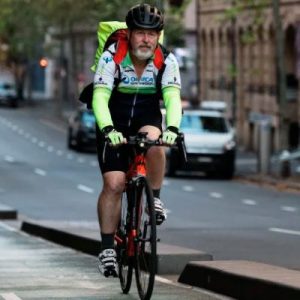
ITS Monday: Edition 21, 2020

This week’s small collection of curated content from the worlds of intelligent transport systems, smart mobility, and associated areas.
Included this week: An active push on active transport, Brisbane doubles down on e-scooters, a 6-step plan to make streets safer for pedestrians, Melbourne data, and more.
And just in case you hadn’t caught it yet, we have a new series of interviews with transport professionals – Effects of COVID on the transport sector – what they see now, what they would like to happen post-pandemic, and what they think will happen. If you’d like to be join this conversation, drop us a line!
Now, scroll down, and see what’s in this week’s edition. Oh, and before you do, be sure check out the quickest way to receive our new content via the subscription box just below …


Joint state and council committee to tackle ‘missing links’ in active transport
Let’s start this week’s ITS Monday with a couple of non-pandemic-related transport stories … though there is some connection, as matters related to transport and the pandemic do share some common transport issues. First up, Brisbane and its cycling networks. Transport Minister Mark Bailey nails it with this quote, ‘What has become clear to me is that while both the state government and the city council have substantial and growing citywide networks, they’re not always as well co-ordinated as they could be.’
READ THE ARTICLE
From heart attack to daily rider: an insider’s guide to bike commuting
For reasons, you know the main one, there’s quite a lot more cycling going on right now. Here’s one cyclist’s guide on how to survive and thrive as a new bike commuter.
READ THE ARTICLE

6 ways to make city streets safer for pedestrians
This via the World Resource Institute | Ross Center’s The City Fix blog, and, well, the title tells it all really. Strong closing though: ‘Imagine a city designed to accommodate pedestrians first. It’s more connected, active, safer and healthier. As cities respond to the effects of COVID-19, efforts to rethink road space should place these pedestrian-focused principles among their highest priorities. People know how to use a good street when they see it, and it is the responsibility of urban planners to create them.’
READ THE ARTICLE
Liverpool pilots new crossings to cut pedestrian accidents
Liverpool and Hull in the UK are taking action to make pedestrians safer, by, in essence, increasing the bling factor of pedestrian crossings. Bling, as in red carpet and lights, to be trialled in the cities’ centres.
READ THE ARTICLE

Coronavirus recovery: public transport is key to avoid repeating old and unsustainable mistakes
This from iMOVE friend and research partner, Professor Hussein Dia of Swinburne University. ‘We will have to rethink public transport design to enable physical distancing, even though it reduces capacities.’
READ THE ARTICLE
What impact has the 2020 COVID-19 pandemic had on pedestrian volumes in central Melbourne?
Another deep numbers dive from Chris Loader’s Charting Transport blog. How much have volumes reduced? How has this varied by day types, locations, and times of day? Read on!
READ THE ARTICLE
Brisbane’s e-scooter trial to continue for another year
It’s probably fair to say that Brisbane is so far Australia’s poster child for shared e-scooter schemes. It has just extended its trial of its scheme for 12 months, with 1,000 scooters rolled out, and the trial areas extended.
READ THE ARTICLE
City of Vancouver to install 50 km of ‘slow streets’ and use roadways for patios
To close this week, a visit to the progressive city of Vancouver, Canada. “As we move through the pandemic and into a phased recovery, more space will be needed to ensure people can safely do the things they need to do like exercising and travelling to work. We also want to help people return to some of the things they really enjoy doing, like eating at a favourite restaurant, picking up items from local businesses or connecting with friends outdoors. We will work closely with businesses and community partners to address needs for space while also ensuring our streets and public spaces remain safe and accessible.”
READ THE ARTICLEDiscover more from iMOVE Australia Cooperative Research Centre | Transport R&D
Subscribe to get the latest posts sent to your email.

